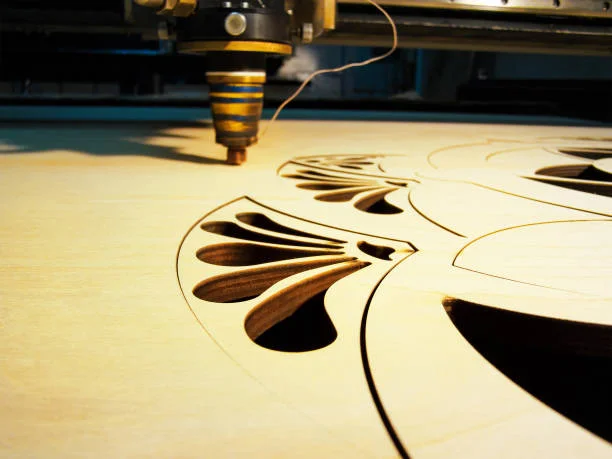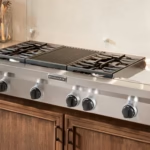I’ll be straight with you – I used to think laser cutting was laser cutting, period. How different could one service be from another, right? Then I had a project that required some pretty intricate wooden components, and after getting quotes from different shops, I realized the gap between amateur operations and professional laser cutting wood services is absolutely massive. We’re talking about differences in equipment capabilities, material handling expertise, quality control systems, and design support that can make or break a project. After working with both budget operations and top-tier shops, I’ve learned that the extra cost for professional services usually pays for itself in reduced waste, better results, and way less frustration.
Equipment Specifications and Capabilities
Professional laser cutting operations invest in industrial-grade equipment that’s in a completely different league from hobby-level machines. We’re talking about CO2 lasers in the 100-400 watt range with beam quality specifications that maintain consistent power density across the entire cutting bed.
Beam stability matters more than most people realize. Professional machines use active beam path monitoring and correction systems that compensate for thermal drift and mechanical variations during long cutting runs. This means the thousandth cut has the same precision as the first cut – something you’ll never get from entry-level equipment.
The motion control systems tell the real story though. Professional machines use servo drives with encoder feedback that can position the cutting head within 0.025mm repeatability. Linear motor systems in top-end machines eliminate backlash entirely, which translates directly to better edge quality and dimensional accuracy.
Cutting bed size and capacity separate professional operations from hobbyist setups too. Industrial machines often handle full sheet goods – 5×10 feet or larger – with automatic material handling systems that eliminate the human error factor in material positioning.
Process Control and Quality Systems
Here’s where professional operations really shine – systematic process control that ensures consistent results batch after batch. Professional shops maintain detailed cutting parameters databases for different material types, thicknesses, and quality requirements.
Environmental controls matter way more than most people think. Professional facilities maintain controlled temperature and humidity levels because wood properties change with environmental conditions. A 5% humidity swing can affect cutting behavior enough to throw off tight-tolerance work.
Gas assist systems in professional setups use precise pressure and flow control rather than just blowing shop air across the cut. Oxygen assist for thick sections, nitrogen for minimal charring, compressed air for standard work – each application gets optimized gas delivery.
Quality control goes beyond just checking finished parts. Professional operations monitor beam power output, cutting speeds, and gas pressures throughout production runs. When parameters drift outside tolerance bands, they stop and correct rather than delivering substandard parts.
Material Expertise and Handling
Professional services understand wood in ways that go way beyond just knowing cutting settings. They maintain relationships with specialty lumber suppliers and can source specific species, grades, and moisture content ranges that optimize laser cutting results.
Material preparation makes a huge difference in final quality. Professional shops often have climate-controlled storage areas where wood stock gets conditioned to optimal moisture levels before cutting. They understand how grain orientation affects cutting behavior and can orient parts for best results.
Flatness control is critical for precision work. Professional operations use vacuum hold-down systems or weighted fixtures that keep materials perfectly flat during cutting. Warped or twisted stock produces parts that are out of specification even if the laser cutting itself is perfect.
Design Support and Optimization Services
This is where professional services really add value beyond just executing cuts. Experienced operators can review designs and suggest modifications that improve cut quality, reduce production time, or eliminate potential problems before they happen.
Kerf compensation calculations require real experience to get right. Professional services maintain databases of kerf widths for different material and parameter combinations, and they know how to adjust designs so finished parts match the intended dimensions exactly.
Nesting optimization saves serious money on larger projects. Professional operations use sophisticated software that can achieve 85-90% material utilization by intelligently arranging parts within sheet boundaries. On big projects, this material savings often exceeds the cost difference between professional and budget services.
Production Capacity and Reliability
Professional laser cutting services invest in redundant equipment and backup systems because they understand that missed deadlines cost everyone money. Multiple machines mean production continues even when one machine needs maintenance.
Preventive maintenance programs keep equipment running at peak performance. Professional operations follow manufacturer-recommended maintenance schedules religiously and often exceed those recommendations based on their specific operating conditions and production volumes.
Rush job capabilities matter when project timelines compress. Professional services maintain capacity margins that allow them to accommodate urgent requests without compromising quality on existing work.
Quality Assurance and Documentation
Professional operations implement systematic quality assurance programs that go way beyond spot-checking finished parts. Incoming material inspection, in-process monitoring, and final inspection create multiple checkpoints that catch problems before they affect deliverable parts.
Documentation standards separate professional operations from casual services. Detailed work orders, parameter records, and quality inspection reports provide traceability that’s essential for commercial and architectural applications.
Measurement and inspection capabilities include precision measuring equipment, go/no-go gauges, and sometimes coordinate measuring machines for complex geometries. Professional services can provide certified dimensional reports when applications require documented compliance with specifications.
Post-Processing and Finishing Services
Many professional laser cutting services offer integrated post-processing that eliminates additional vendors and handling steps. Edge sanding, cleaning, protective coating application, and assembly services can deliver project-ready components rather than just cut parts.
Packaging and shipping expertise matters more than you’d think. Professional operations understand how to protect delicate cut parts during transit and can coordinate deliveries to match project schedules rather than just shipping when convenient.
Every question sparks a journey—uncover the answers waiting for you on Management Works Media.






